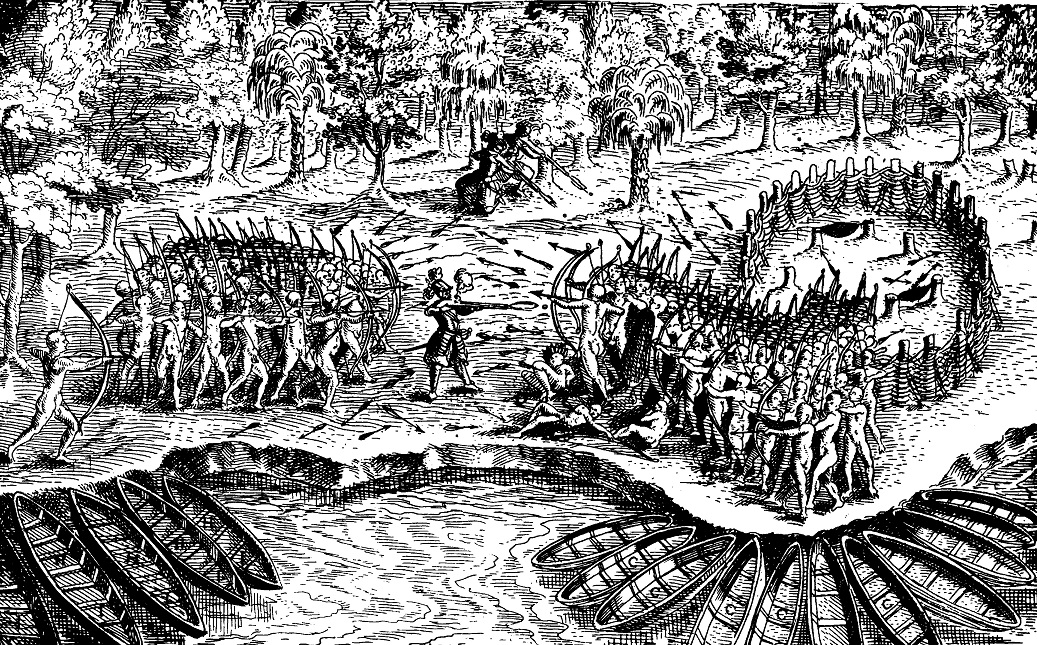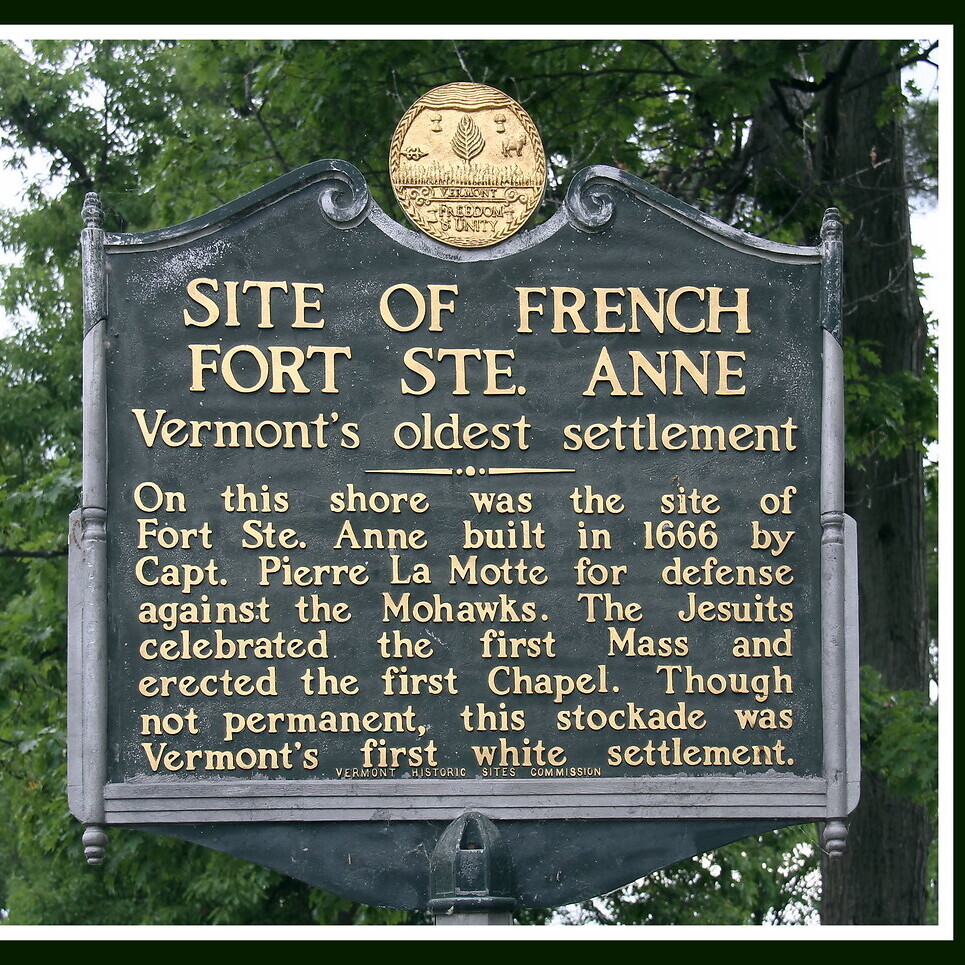New Frontier: The French in Vermont

In 1609 Samuel de Champlain became the first European to set foot in the land that would eventually become Vermont. Paddling south on the lake that now bears his name, he encountered native peoples on both shores, mapped the landscape, and claimed the region for France.
 Within 50 years, French colonial ambitions from the north clashed with a rapidly growing English population to the south. European powers took advantage of long-standing inter-tribal animosities and used Native Americans as proxy raiding parties to devastating effect. In July of 1666 the French established a fort and settlement at Fort St. Anne in Isle La Motte, the first European settlement in Vermont.
Within 50 years, French colonial ambitions from the north clashed with a rapidly growing English population to the south. European powers took advantage of long-standing inter-tribal animosities and used Native Americans as proxy raiding parties to devastating effect. In July of 1666 the French established a fort and settlement at Fort St. Anne in Isle La Motte, the first European settlement in Vermont.
Over the next century, the French fortified Lake Champlain as far south as Crown Point, building Fort St. Frederick and Carillon (now Ticonderoga). King Louis XV established land grants, known as seigneuries, along the shores of Lake Champlain. French habitants, or settlers, slowly moved into the region. Ultimately, the English victory over the French and the resulting Treaty of Paris in 1763 put eastern North America solidly in English hands. French inhabitants remained in both Canada and Vermont, giving rise to the rich Quebecois culture.
Image: Samuel de Champlain’s depiction of his battle alongside Algonquin tribes against the Iroquois near Ticonderoga, NY in 1609.
Explore More
This page was originally created as part of the Vermont Historical Society’s Freedom & Unity exhibit in 2006. Some materials may have been updated for this 2021 version.
